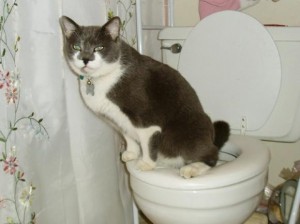Potential Issues of Flushing Cat Poop Down Your Toilet - Protect Your Plumbing
Potential Issues of Flushing Cat Poop Down Your Toilet - Protect Your Plumbing
Blog Article
We have encountered this post relating to Don’t flush cat feces down the toilet down the page on the internet and think it made perfect sense to relate it with you over here.

Introduction
As pet cat owners, it's vital to bear in mind how we get rid of our feline pals' waste. While it may seem practical to purge feline poop down the toilet, this technique can have destructive repercussions for both the setting and human health and wellness.
Environmental Impact
Flushing pet cat poop introduces dangerous virus and bloodsuckers right into the supply of water, positioning a significant risk to water ecosystems. These contaminants can negatively affect aquatic life and concession water quality.
Wellness Risks
Along with environmental worries, flushing cat waste can additionally pose health and wellness dangers to people. Feline feces may include Toxoplasma gondii, a parasite that can trigger toxoplasmosis-- a possibly serious disease, particularly for expecting ladies and people with damaged body immune systems.
Alternatives to Flushing
Thankfully, there are much safer and extra responsible methods to take care of pet cat poop. Think about the complying with alternatives:
1. Scoop and Dispose in Trash
One of the most common approach of taking care of cat poop is to scoop it right into a naturally degradable bag and toss it in the trash. Make certain to utilize a specialized clutter inside story and deal with the waste without delay.
2. Usage Biodegradable Litter
Opt for naturally degradable feline trash made from products such as corn or wheat. These trashes are environmentally friendly and can be securely disposed of in the garbage.
3. Hide in the Yard
If you have a backyard, take into consideration burying cat waste in a designated area away from veggie gardens and water resources. Make sure to dig deep enough to avoid contamination of groundwater.
4. Install a Pet Waste Disposal System
Buy a family pet garbage disposal system especially designed for cat waste. These systems make use of enzymes to break down the waste, decreasing odor and environmental impact.
Final thought
Liable animal ownership expands beyond giving food and shelter-- it also includes proper waste monitoring. By avoiding flushing feline poop down the commode and opting for different disposal methods, we can decrease our environmental impact and protect human health.
Why You Should NEVER Flush Cat Poop (and/or Litter) Down Your Toilet
The Problem with Litter
The main function of litter is to solidify and adhere to your cat’s waste. While this makes litter excellent for collecting cat poop and urine, it’s also the exact property that makes it a nightmare when flushed down the toilet.
Cat litter can and will clog pipes. There is non-clumping litter, but it’s still quite heavy and can build up in pipes. This is true even of supposed “flushable litter.”
The problems only compound when the litter is already clumped into cat waste. Toilet paper is among the more flushable things, and even too much of that will clog a toilet.
The Problem with Cat Poop
Sewers and septic systems are designed with human waste in mind. The microbes that help break down human waste don’t work on cat waste. Additionally, cat poop plays host to the parasite Toxoplasma gondii.
When flushed, this parasite can enter the environment in places it was never meant to, posing a risk to pregnant women, their unborn children, and other people with compromised immune systems. While it might not seem possible, flushing cat poop can indeed introduce this parasite to the public water supply.
These reasons are why, even if you’ve trained your cat to go on the toilet and flush, which is possible, it’s still not a good idea. Also, pregnant women and the immunocompromised shouldn’t change litter, either.
How to Handle Litter
The best way to handle litter is to simply put it in a plastic bag and place it in the trash. Avoiding environmental risks and possible plumbing damage is worth the extra effort.
You can also invest in devices that seal away your cat’s waste in a separate compartment, so you don’t have to change the litter nearly as often. They’re also safer for pet owners because they limit the possibility of Toxoplasma gondii exposure.
Disposing of litter the old-fashioned way will ensure you won’t have to worry about any issues that flushing the waste can potentially cause.
Take Care of Clogged Pipes with Stephens Plumbing, Heating & Air Conditioning
The reasons you should never flush cat poop down your toilet are numerous, but sometimes the inevitable happens despite your best efforts.
Stephens Plumbing, Heating & Air Conditioning is ready to help if you’re experiencing litter-blocked plumbing. Whether you need us in an emergency or want to schedule regular maintenance, we’re here for you.
https://www.stephensplumbing.net/bathroom-plumbing/never-flush-cat-poop-down-your-toilet/

Hopefully you enjoyed reading our post about Don’t flush cat feces down the toilet. Thanks for taking a few minutes to browse our piece of content. Enjoyed our blog? Please share it. Help somebody else discover it. Thank-you for your time spent reading it.
Request Appointment Report this page